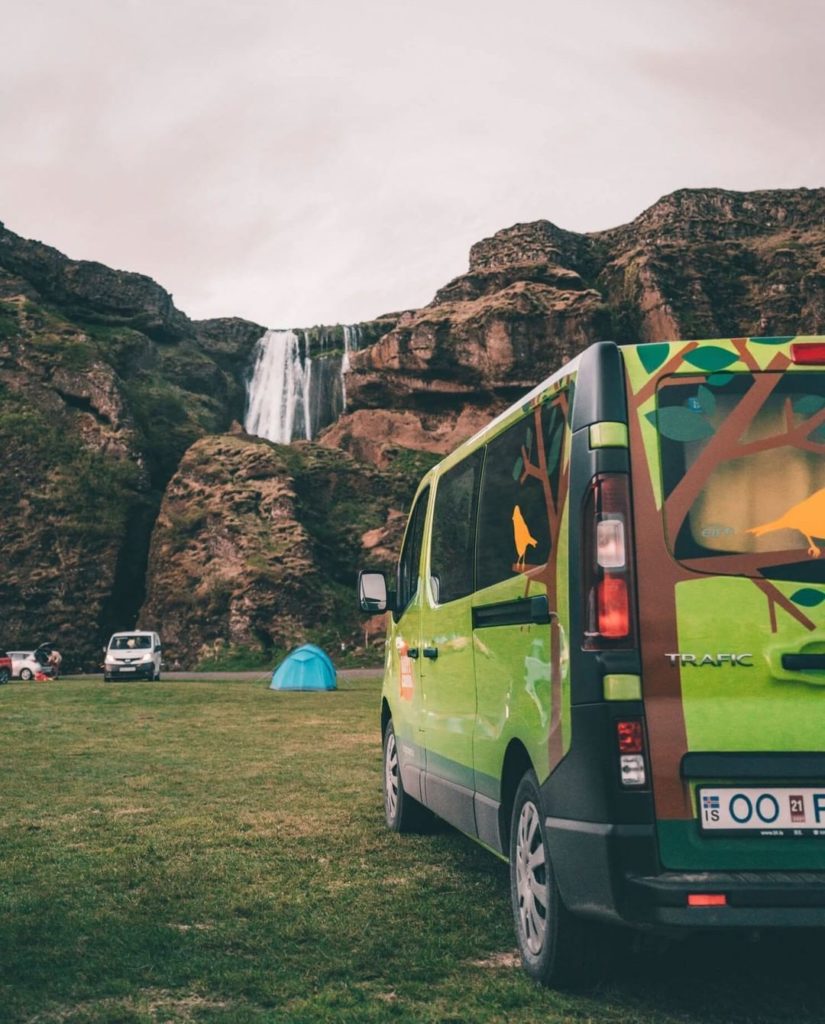Did I pick the right season to travel to Iceland? Some people believe that visiting Iceland is only possible in summer. They also think we spend the winters buried under 10 meters of snow, waiting for the spring (and the tourists) to come back. The truth is, there is no bad season for a trip to Iceland. Each season has its own pros and cons and it all depends on what you want to see and do. Let‘s break down some of the most popular travel goals and when is the best time to travel to make it happen:
Driving the Ring Road
All year round
Ring Road is not a popular tourist route but also the most important piece of infrastructure on the island so it stays open all year round. Of course, in the summer months, you will be able to explore more detours because many non-essential roads are closed. However, there are still plenty of places to see.
Camping
All year round (preparation required)

There are two most popular questions regarding winter camping in Iceland. Firstly, won‘t I freeze to death in your campervan at night? Not at all! All our campers have a reliable Webasto heater to keep you warm. In addition, we recommend bringing (or renting) a sleeping bag designed for winter camping. Camping in a tent requires even more preparation and we do not recommend it for inexperienced travelers. The second most common question is “are there any open campsites in winter?”. While most campsites are open during summer, there are still plenty that operates all year round.
Exploring Highlands
Mid-June through September
There is always an option to hire an experienced guide with a modified monster truck to take you up to the highlands in winter. So, technically it can be explored all year round. However, for the general public, the roads to highlands are closed most time of the year, except summer. We cover Icelandic highlands in detail in our 4×4 Travel Guide and in the video down below.
Midnight Sun
Mid-May until Mid-August
Summer Solstice around 20th June is the shortest night of the year – the peak of the Midnight Sun season. If you want to experience what it feels when the nighttime darkness never comes, book a trip between mid-May and mid-August. For some it is the best season for a trip to Iceland because long days allow you to visit many different destinations in one day. The downside – many people struggle to get a good night‘s sleep. If you need darkness to fall asleep, make sure to pack a sleeping masks.
Northern Lights
October-March
To be able to see the Northern Lights all you need is a clear sky and some darkness. They can be spotted as early as mid-August but the peak season is October through April. This is why the „in-between“ season (September-October, March-April) is great to travel – you get the best of both seasons. Still, plenty of daylight to explore and a very good chance to spot the Northern Lights. I wrote more about it recently in this blog post.
Puffins
May-August
I‘m afraid, puffins don‘t stay in Iceland all year round. They only visit us in the summertime and spend the rest of the year out in the sea. If you are interested in puffin watching, learn how, where, and when to see find them in Iceland.
Whale Watching
April to September
AlthoAlthough some whale species can be seen around Iceland all year round, the biggest variety of them is found during the summer months. Species like humpback whales swim to warmer water during winter. Read more on the whale watching in Iceland in this thorough blog post by Laufey Haraldsdóttir.
Soaking in outdoor pool
All year (a lot more exciting in winter)
Pools, hotpots, and natural baths are open all year but for me, personally, it is a lot more exciting to take a dip when it is cold outside. So no matter what time of year you are traveling to Iceland – make sure to visit as many pools and hotpots as you can.
Choosing the right season for your trip
It is possible to have a great time in Iceland at any time. However, there are some general notes to consider such as prices (summer is the most expensive season for tourists) or weather (Icelandic weather is unpredictable). As the old Nordic saying goes „There is no such thing as bad weather just bad clothing.“ That might be true, but do your research on what to pack and what to expect. Remember, you don’t always have to choose between two extremes – summer or winter. As I mentioned before, the best season to visit Iceland might be fall or spring when most winter and summer activities overlap.
Here at Happy Campers, we want travelers to feel confident and prepared. I recommend checking out our trip planners on camping in Iceland, winter travel, and 4×4 trips, as well as our blog.
Back